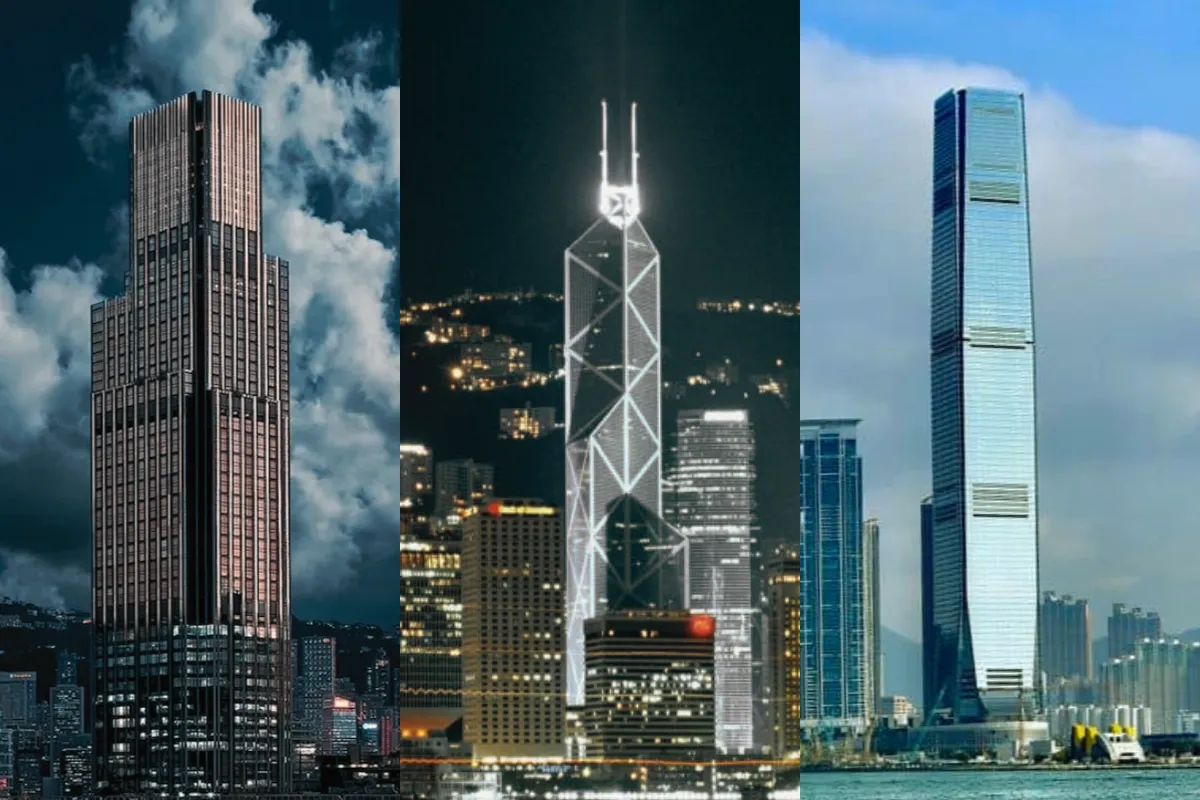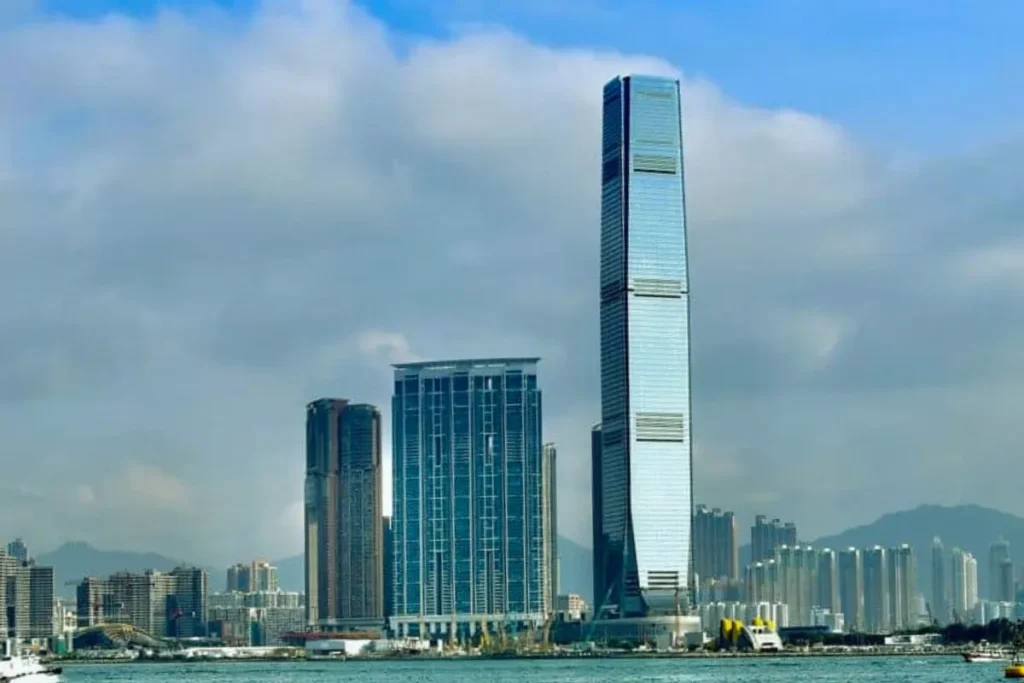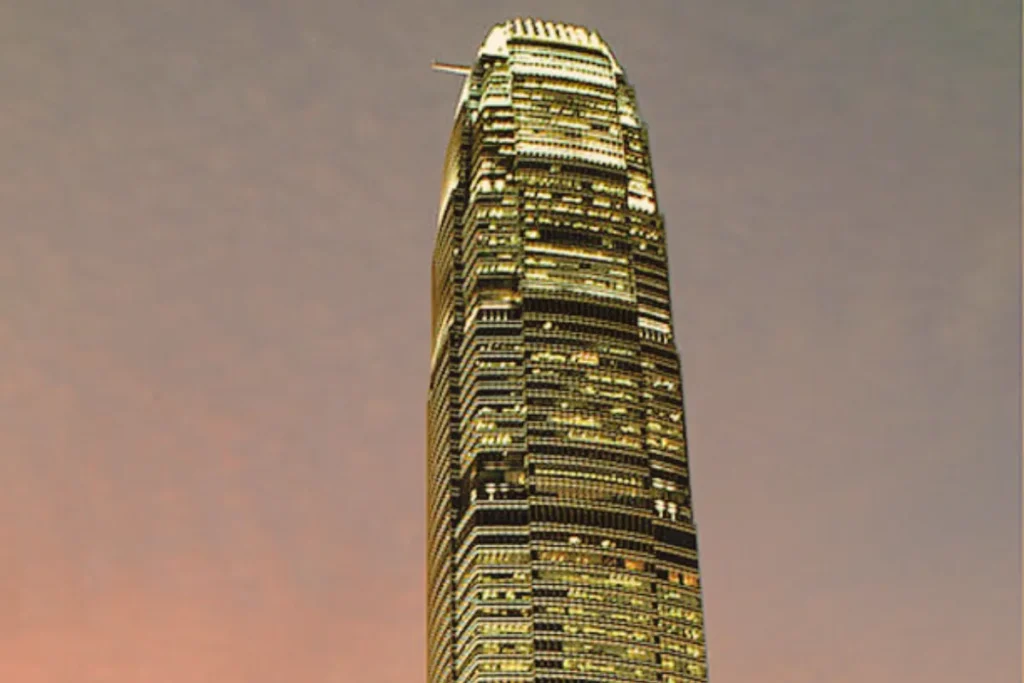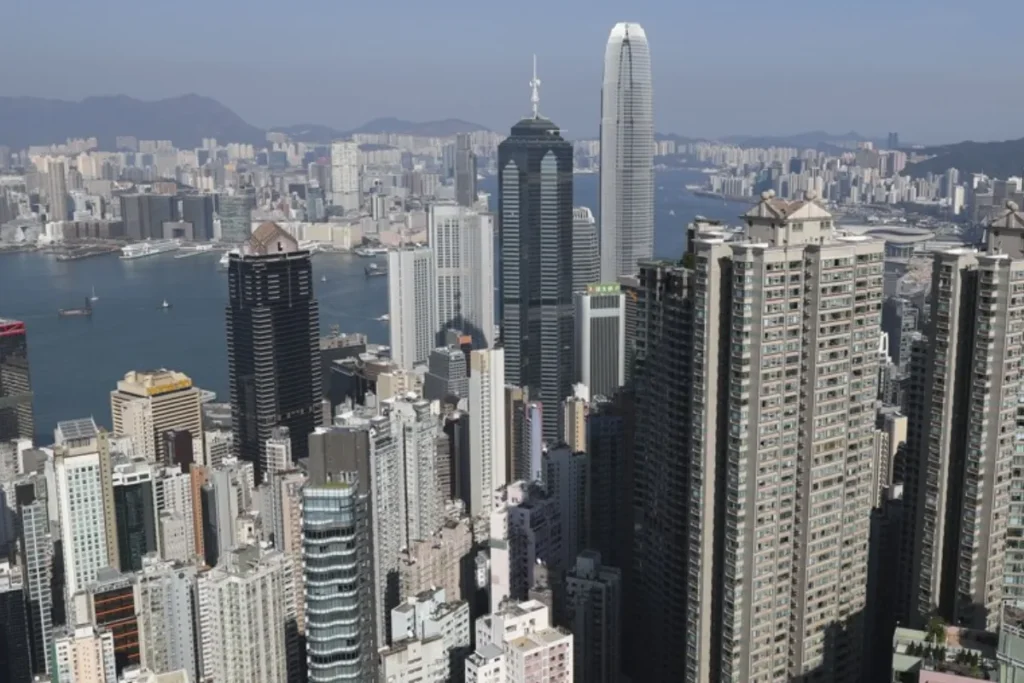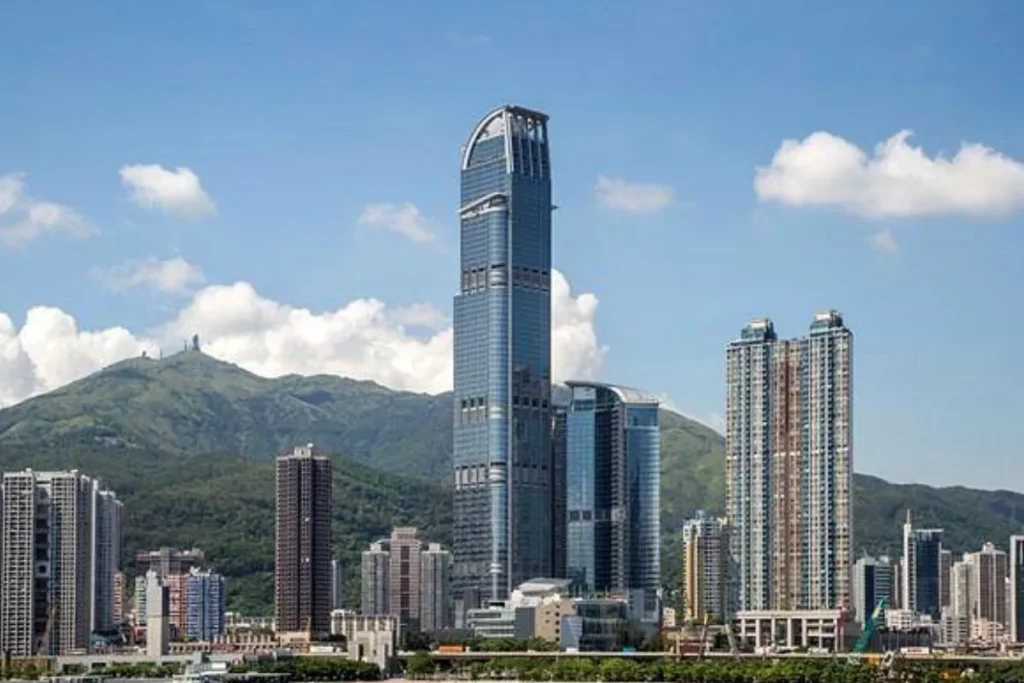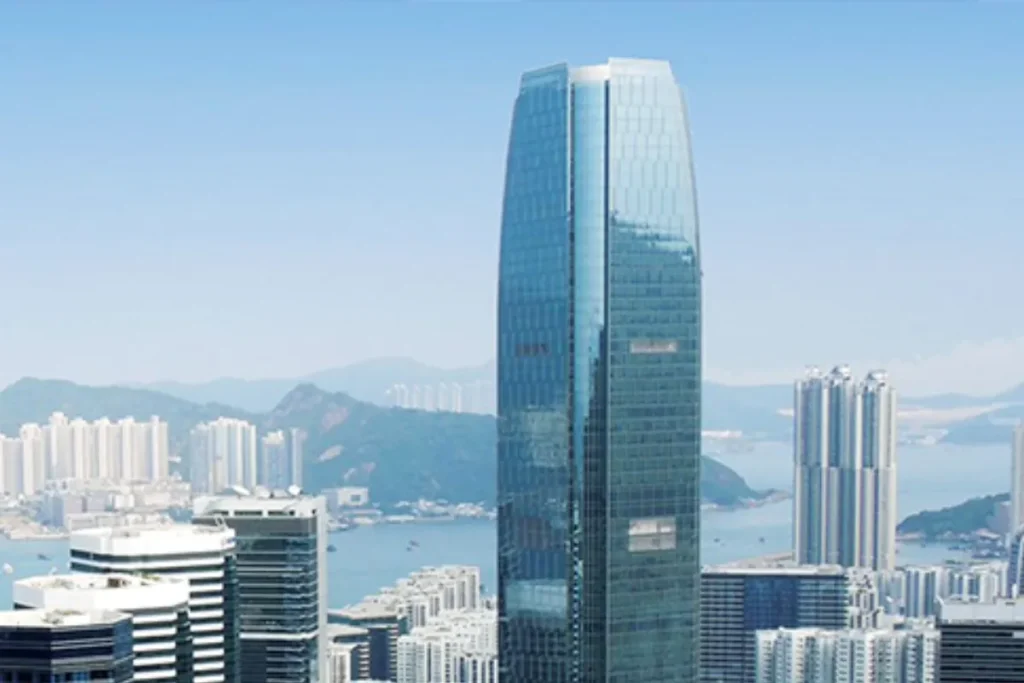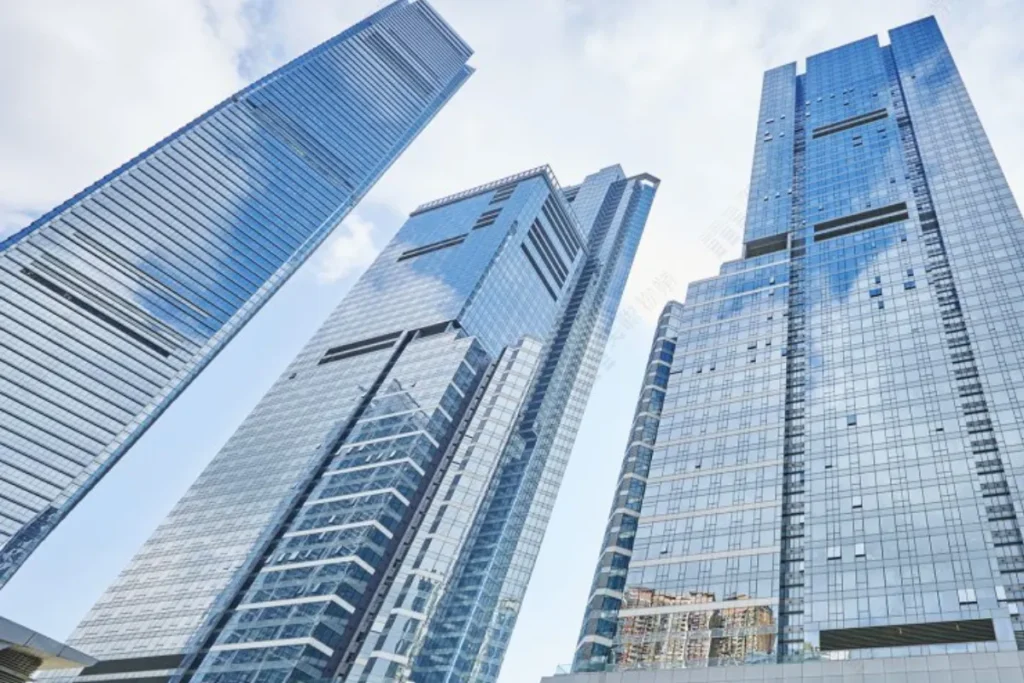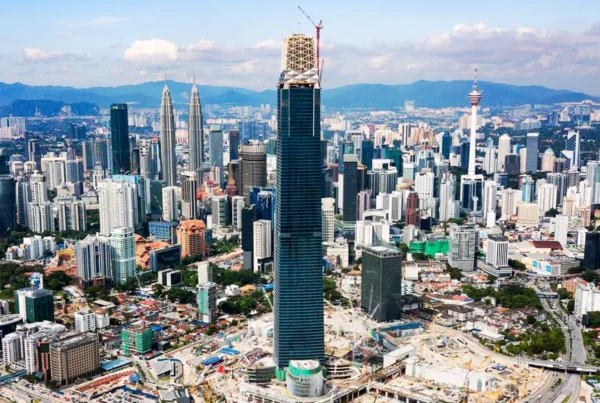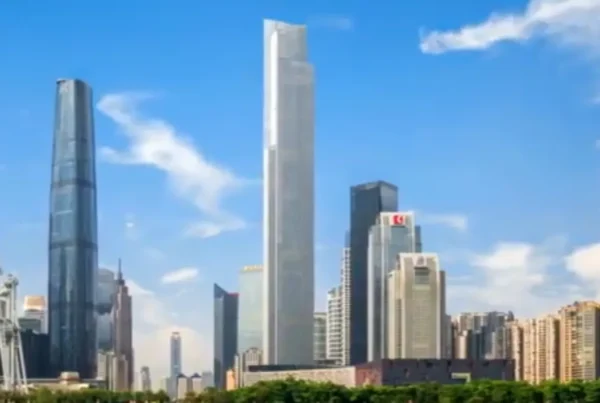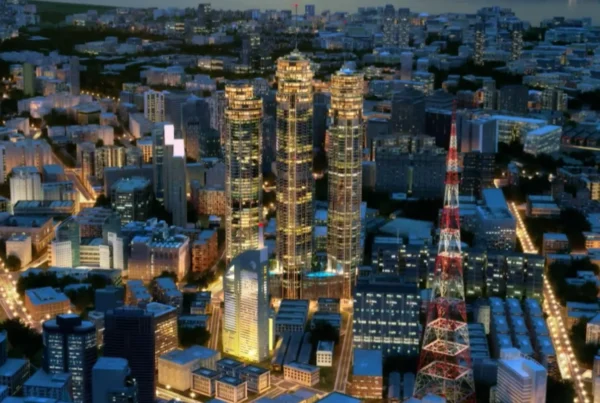Table Of Contents
- Introduction Of The Tallest Buildings In Hong Kong
- Top 10 Tallest Buildings In Hong Kong
- 1. International Commerce Centre
- 2. Two International Finance Centre
- 3. Central Plaza
- 4. Bank of China Tower
- 5. The Centre
- 6. Nina Tower
- 7. One Island East
- 8. Victoria Dockside
- 9. The Cheung Kong Centre
- 10.Cullinan North And South Tower
- Interesting Facts About Tallest Buildings In Hong Kong
- Advantages & Challenges Of Hong Kong Tallest Buildings
- Conclusion
- FAQS
Introduction
Hong Kong’s skyline boasts a stunning array of architectural marvels, with towering structures that define the city’s landscape. Among them, the quest for height and innovation has led to the creation of some of the world’s tallest buildings.
From the iconic International Commerce Centre (ICC), soaring at 484 meters, to the Two International Finance Centre (IFC) and other notable structures, these are the hong kong tallest buildings that stand as symbols of Hong Kong’s economic prowess and architectural ingenuity.
In Hong Kong, where skyscrapers seem to touch the clouds, each structure tells a unique story, contributing to the narrative of Hong Kong as a global hub of modernity and urban sophistication.
Top 10 Tallest Buildings In Hong Kong By Height
| Position | Name | Hight | Floors | Built Year |
| 1 | International Commerce Centre | 484m (1,588ft) | 108 | 2010 |
| 2 | Two International Finance Centre | 416m (1,364ft) | 88 | 2003 |
| 3 | Central Plaza | 374m (1,227ft) | 78 | 1992 |
| 4 | Bank of China Tower | 367m (1,205ft) | 70 | 1990 |
| 5 | The Centre | 346m (1,135ft) | 73 | 1998 |
| 6 | Nina Tower | 320m (1,050ft) | 80 | 2007 |
| 7 | One Island East | 298m (978 ft) | 68 | 2008 |
| 8 | Victoria Dockside | 284m (931 ft) | 65 | 2017 |
| 9 | The Cheung Kong Centre | 283m (928 ft) | 63 | 1999 |
| 10 | Cullinan North And South Tower | 270m (886 ft) | 88 | 2008 |
1. International Commerce Centre (ICC)
The International Commerce Centre (ICC), standing at an impressive height of 484 meters (1,588 feet) with 118 floors, was completed in 2010. It is the tallest building in Hong Kong. Serving a dual purpose as a hotel and office space, it has secured its place as the 8th-tallest building globally.
2. Two International Finance Centre (IFC)
The Two International Finance Centre (IFC), completed in 2003, rises to a height of 416 meters (1,364 feet) with 88 floors. Initially claiming the title of the tallest building in Hong Kong from 2003 to 2010, it now stands as the 18th-tallest building globally.
3. Central Plaza
Central Plaza, completed in 1992, stands at a height of 374 meters (1,227 feet) with 78 floors, primarily serving as office space. Notably, it houses the world’s highest church. From 1992 to 1996, Central Plaza held the title of the Highest building in the world outside of the United States. It was also the world’s tallest reinforced concrete building until the completion of CITIC Plaza in 1997.
4. Bank Of China Tower
The Bank of China Tower, completed in 1990, stands at a height of 367 meters (1,205 feet), with 70 floors dedicated to office use. It holds the distinction of being the first building outside of the United States to surpass 305 meters (1,000 feet) in height.
5. The Centre
The Centre, standing tall at 346 meters with 73 floors, is a notable office building completed in 1998. Its sleek design adds to the city skyline, providing a hub for business activities. This architectural marvel combines height and functionality, embodying modernity and efficiency in its 20th-century construction.
You can also read about Tallest Buildings In Malaysia.
6. Nina Tower
Completed in 2007, Nina Tower reaches a height of 319 meters (1,048 feet) with 80 floors, serving a dual purpose as both a hotel and office space. This architectural gem contributes to the cityscape, offering a blend of elegance and functionality.
7. One Island East
One Island East, erected in 2008, stands at a height of 298 meters (979 feet) with 69 floors exclusively designated for office use. This modern office tower contributes to the city’s dynamic skyline, providing a space for various business activities.
8. Victoria Dockside
Victoria Dockside, completed in 2017, graces the skyline at a height of 284 meters (931 feet) with 65 floors, offering a harmonious blend of hotel and office spaces. This project is home to the renowned Rosewood Hotels & Resorts, adding a touch of luxury to the cityscape.
9. The Cheung Kong Centre
The Cheung Kong Centre, completed in 1999, stands at a height of 283 meters (928 feet) with 63 floors designed exclusively for office use. This architectural marvel is a key player in the city’s skyline, representing a blend of functionality and modern design.
10. Cullinan North And South Tower
The Cullinan North Tower and The Cullinan South Tower, both completed in 2008, share a height of 270 meters (886 feet) with 68 floors each, exclusively dedicated to residential living. Notably, The Cullinan North Tower and The Cullinan South Tower jointly hold the distinction of being the tallest completed all-residential buildings in Hong Kong.
Interesting Facts About Hong Kong Tallest Buildings 2024
- (ICC), the tallest building in Hong Kong.
- (IFC) held the title of the tallest building in Hong Kong from 2003 to 2010.
- Central Plaza was the tallest building in the world outside of the United States from 1992 to 1996.
- The Centre is home to the world’s highest church.
- Nina Tower is a dual-purpose building, serving as both a hotel and office space.
- One Island East is an exclusively office building.
- The Cullinan North Tower and The Cullinan South Tower are the tallest completed all-residential buildings in Hong Kong.
You can also read about Tallest Youtubers Height.
Advantages & Challenges Of Hong Kong Biggest Buildings
Advantages
Challenges
- Hong Kong’s tall buildings serve as global landmarks, contributing to its recognition on the world stage.
- The skyscrapers symbolize Hong Kong’s economic prowess, attracting businesses and investors.
- Vertical construction allows for optimal land use in a densely populated city, maximizing available space.
- The competition for height fosters architectural innovation, creating iconic and aesthetically pleasing structures.
- Tall buildings, such as the ICC, have become major tourist attractions, boosting the city’s tourism industry.
- Vertical growth exacerbates limited land availability, potentially leading to congestion and crowding.
- Tall buildings demand significant resources, contributing to environmental concerns such as energy consumption and waste.
- The luxury residential spaces in some skyscrapers may exacerbate social inequality, as not all residents have access to such accommodations.
- The concentration of tall buildings strains infrastructure, impacting transportation, utilities, and services.
- Hong Kong’s seismic activity poses a challenge for tall buildings, requiring robust engineering to ensure safety.
Advantages
- Hong Kong’s tall buildings serve as global landmarks, contributing to its recognition on the world stage.
- The skyscrapers symbolize Hong Kong’s economic prowess, attracting businesses and investors.
- Vertical construction allows for optimal land use in a densely populated city, maximizing available space.
- The competition for height fosters architectural innovation, creating iconic and aesthetically pleasing structures.
- Tall buildings, such as the ICC, have become major tourist attractions, boosting the city’s tourism industry.
Challenges
- Vertical growth exacerbates limited land availability, potentially leading to congestion and crowding.
- Tall buildings demand significant resources, contributing to environmental concerns such as energy consumption and waste.
- The luxury residential spaces in some skyscrapers may exacerbate social inequality, as not all residents have access to such accommodations.
- The concentration of tall buildings strains infrastructure, impacting transportation, utilities, and services.
- Hong Kong’s seismic activity poses a challenge for tall buildings, requiring robust engineering to ensure safety.
Conclusion
In Hong Kong’s skyline, these towering buildings not only reach remarkable heights but also symbolize the city’s progress and prosperity. From the towering International Commerce Centre to the elegant Cullinan North and South Towers, each structure tells a tale of innovation and ambition.
These Hong Kong’s tallest buildings touch the sky; they reflect Hong Kong’s commitment to growth, blending modern living, business, and leisure seamlessly. The city’s skyline, adorned with these architectural wonders, stands as a testament to Hong Kong’s prominence on the global stage.
If you want read more about Tallest Buildings In China / Tallest Actor In Bollywood and many more articles kindly click the link at Tallestly.
FAQs
Why does Hong Kong have so many tall buildings?
Hong Kong’s limited land and high population density drive the construction of tall buildings, maximizing vertical space for both residential and commercial purposes.
What is the significance of these skyscrapers?
Skyscrapers in Hong Kong symbolize economic prosperity, global recognition, and architectural innovation, contributing to the city’s identity as a modern metropolis.

